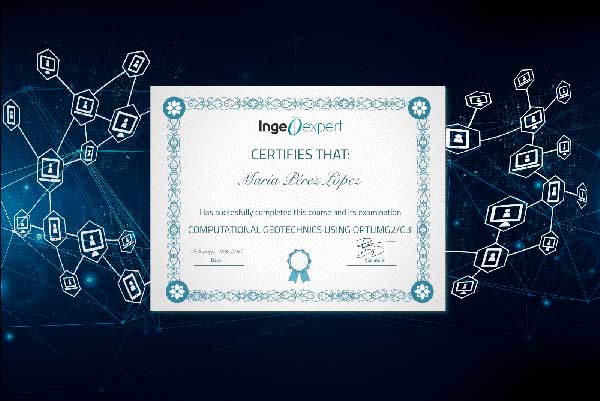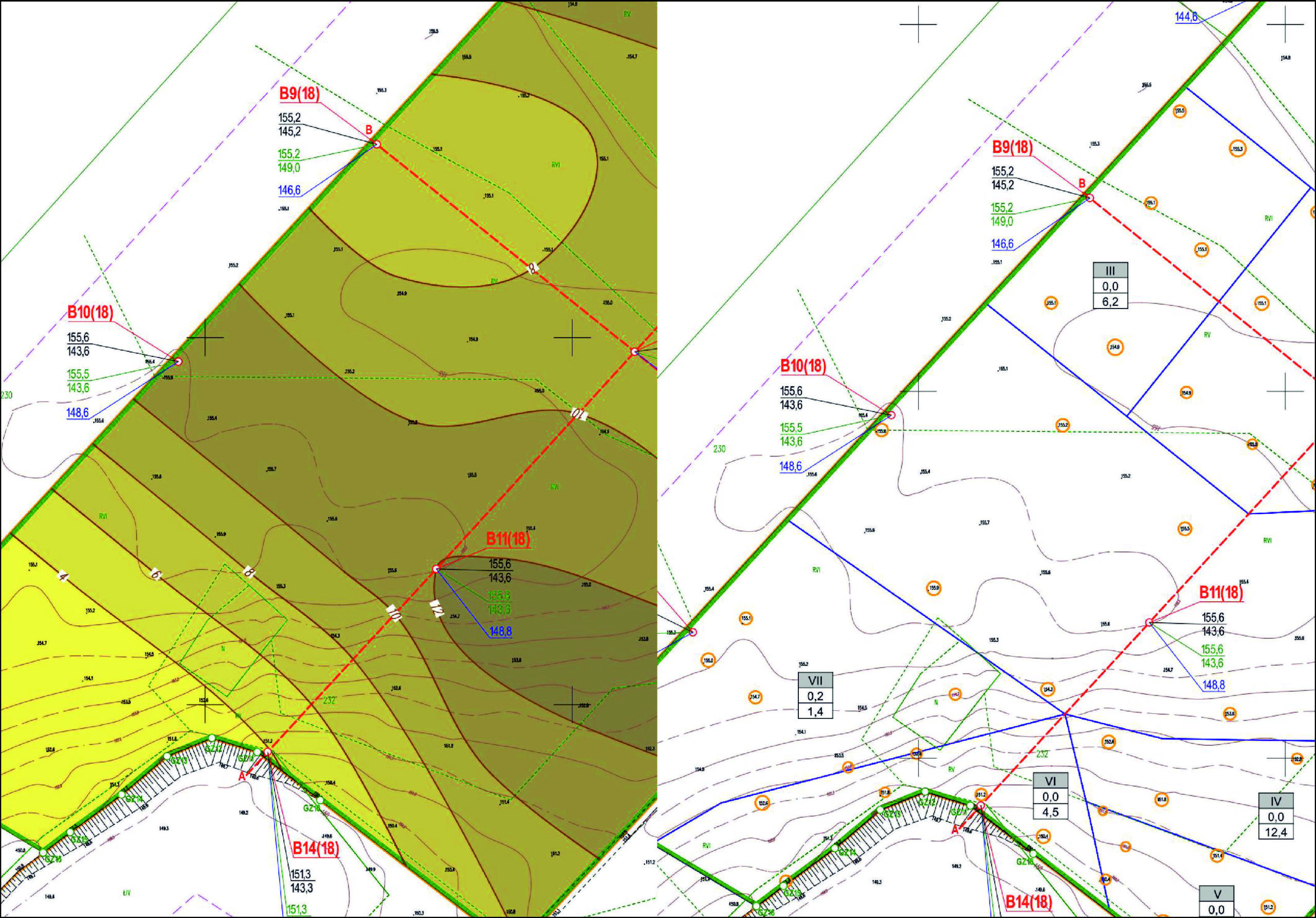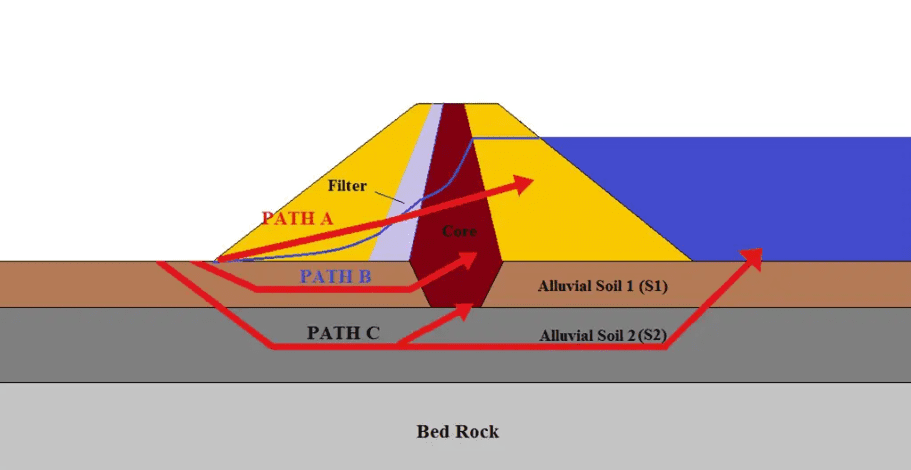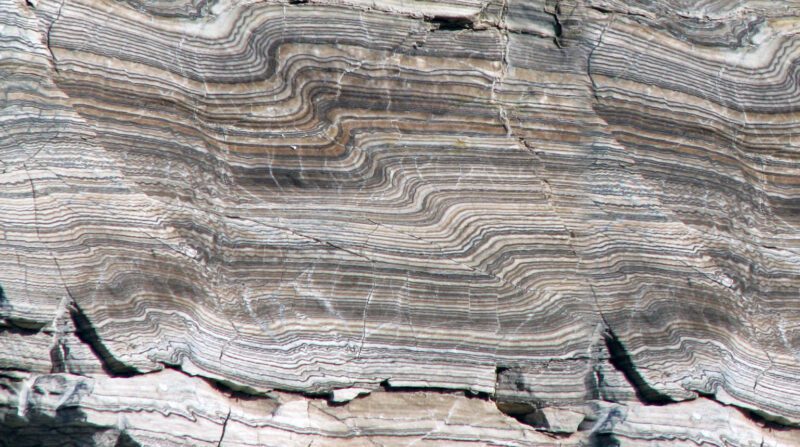Fracture mechanics of rock for geologists
Online course |
|
50 hours / 6 weeks |
|
To be determined |
Introduction
Geomechanics- how rocks of all kinds deform under stress and fluid-charged conditions- is of critical important to any country’s national security. It gives the capability to understand and predict structures from the nanoscale through continent-wide tectonics, whether past, current, or future. It connects geology to engineering, thereby enabling engineers to better design any project that deals with rocks, such as secure reserves of energy needed to run their economies.
The key to understanding geologic processes is to reason physically. Rocks that commodities fluids underground, or that moved in great sheets over thousands of km obey the same rules that are used to design your car, fly you to a destination, or power this building. A quote that is apropos is that “mechanics is to geology as chemistry is to petrology.” Even the most basic physical concepts can go a long way toward understanding how various geologic phenomena work, giving us the basis for interpreting past geologic structures as well as being able to predict future changes due to natural or human-induced activities.
Objectives
This course provides an introduction to the field of geologic fracture mechanics, bridging the gap between general textbooks and research articles. It treats the common geologic structures—joints, hydrofractures, faults, stylolites, and deformation bands—from a fresh perspective. Presented in an engaging and accessible style, it applies fracture mechanics to engage and challenge participants who are working in structural geology, tectonics, geomechanics, rock mechanics, soil mechanics, hydrology, neotectonics, geological engineering, and mining engineering using examples from the Earth and other planetary bodies. The participant should come away with an improved understanding of rock deformation in general and of the structural discontinuities that result from it.
Limited places.
Module I: Introduction to Geologic Structural Discontinuities
- – What is a geologic structural discontinuity?
- – Two types: sharp and tabular
- – Displacement modes
Module II: Elastic Rock Rheology and Structural Discontinuities
- – Laboratory testing of rocks
- – Terms that come from rock mechanics
- – The complete stress-strain curve for rock
- – Stiffness vs. Strength and why they differ
- – Pre-Peak (loading) vs. Post-Peak (unloading)
- – Relationships to porosity
Module III: Cracks and Anticracks
- – Surface textures in a fracture mechanics context
- – How fast do geologic cracks propagate?
- – Anticracks as structural discontinuities in the host rock
Module IV: Fracture Mechanics—A Tour of Basic Principles
- – Linear Elastic Fracture Mechanics (LEFM)
- – Displacements, not strains, are the key to understanding geologic structural discontinuities
- – Displacements, displacements, and stresses on and around common structural discontinuities
- – Determining the validity of LEFM applied to rocks
- – Stress intensity factor, toughness, and tensile strength
- – More complete crack models
Module V: Discontinuity Patterns and their
- – Interpretation Discovery patterns
- – Echelon configurations of cracks
- – How do microcracks create a fault?
Module VI: Faults
- – Fault offsets
- – Sense of strain, sense of step, and sense of slip: how to tell in the absence of passive markers
- – The strain ellipse and fracture mechanics of faults
Module VII: Stress States for Faulting and their Applications
- – Anderson
- – Coulomb: both local and global forms
- – Fault and fracture gradients
- – Critically stressed faults
- – Stratigraphy and faulting
- – Lithospheric strength envelopes
- – Time-dependent friction
Module VIII: Deformation Bands
- – Classification by deformation mechanism and by kinematics
- – Field expression in both extensional and contractional tectonic regimes
- – Permeability
- – Deformation bands as structural discontinuities
- – Dilation angle and why it is important
- – Relationship to the remote stress state
- – Deformation of soft rocks and soils: loose vs. dense
- – Yield envelopes for deformation bands
- – Paths to faulting
Concluding Remarks
- – The Importance of good field observations
- – The 70% rule
- – Mechanics tells us how geology works
End of Course
Dr. Schultz
Dr. Schultz applies geologic fracture mechanics and industry tools to address pressing issues in rock deformation, caprock integrity, and fault sealing related to underground gas storage and sequestration. My goal is to advance energy security and sustainability, with underground hydrogen storage (UHS) being a key part of that UHS will be critical to the resilience of energy systems as renewables and hydrogen become a larger fraction of regional and global energy supplies.
The owner of Orion Geomechanics LLC of Cypress, Texas, he previously was Senior Research Scientist at The University of Texas at Austin, Principal Geomechanicist with ConocoPhillips, and Foundation Professor of Geological Engineering and Geomechanics (now Emeritus) with the University of Nevada, Reno. He received his B.A. degree in Geology from Rutgers University, M.S. degree in Geology from Arizona State University, and Ph.D. degree in Geology from Purdue University. Dr. Schultz is Charter Member of the American Rock Mechanics Association (ARMA), a member of the Interstate Oil and Gas Compact Commission, a Fellow of the Geological Society of America, a licensed Professional Geologist in the State of Texas, and was an instructor of State oil and gas regulators with TopCorp. He is active worldwide in underground energy storage, especially hydrogen.
The course is delivered online through our easy-to-use Virtual Campus platform. For this course, a variety of content is provided including:
– eLearning materials
– Videos
– Interactive multimedia content
– Live webinar classes
– Texts and technical articles
– Case studies
– Assignments and evaluation exercises
Students can delivery the materials and work through the course at their own pace.
We regularly update this course to ensure the latest news and state-of-the-art developments are covered, and your knowledge of the subject is current.
Live webinars form part of our course delivery. These allow students and tutors to go through the course materials, exchange ideas and knowledge, and solve problems together in a virtual classroom setting. Students can also make use of the platform’s forum, a meeting point to interact with tutors and other students.
The tutoring system is managed by email. Students can email the tutor with any questions about the course and the tutor will be happy to help.
Enrollees for this course are expected to have enough background in geology to know the basic types of geologic structures, such as joints, faults, and hydraulic fractures. Some background or interest in working engineering problems, using statics and mechanics of materials (but not dynamics) would be helpful. Participants should also be familiar with basic concepts such as Mohr circles and trigonometry.
The course is not purely for academics—undergrads, graduate students, postdocs in any field, practicing geologists—so working professionals in the energy and resources industry can bring themselves up to date on fracture interpretation: exploration and reservoir geologists, reservoir and completions engineers, interns, core loggers, mining and geotechnical engineers, and their managers. All are welcome and each participant should walk away with new knowledge, understanding, or at least a better appreciation of the challenges and ambiguities in fracture interpretation.
Once a student finishes the course and successfully completes the assignments and evaluation tests, they are sent an accreditation certificate. The certificate is issued by Ingeoexpert to verify that the student has passed the course. It is a digital certificate that is unique and tamper-proof – it is protected by Blockchain technology. This means it is possible for anyone to check that it is an authentic, original document.
You will be able to download the certificate in an electronic format from the Virtual Campus platform. The certificate can be forwarded by email, shared on social networks, and embedded on websites. To see an example, click here.
Understanding how geologic structures formed, grew, and interact with each other is central to geologists who examine core, map and interpret geologic and seismic cross sections and 3D image cubes of deformed rock.
Emphasis is placed on fingerprinting structures in the absence of offset or slip-sense data, which adds an additional capability to the geologist’s toolbox. Correct identification of fracture type enables fracture prediction and future reactivation within the subsurface environment in response to natural or human-induced changes.
Introduction
Geomechanics- how rocks of all kinds deform under stress and fluid-charged conditions- is of critical important to any country’s national security. It gives the capability to understand and predict structures from the nanoscale through continent-wide tectonics, whether past, current, or future. It connects geology to engineering, thereby enabling engineers to better design any project that deals with rocks, such as secure reserves of energy needed to run their economies.
The key to understanding geologic processes is to reason physically. Rocks that commodities fluids underground, or that moved in great sheets over thousands of km obey the same rules that are used to design your car, fly you to a destination, or power this building. A quote that is apropos is that “mechanics is to geology as chemistry is to petrology.” Even the most basic physical concepts can go a long way toward understanding how various geologic phenomena work, giving us the basis for interpreting past geologic structures as well as being able to predict future changes due to natural or human-induced activities.
Objectives
This course provides an introduction to the field of geologic fracture mechanics, bridging the gap between general textbooks and research articles. It treats the common geologic structures—joints, hydrofractures, faults, stylolites, and deformation bands—from a fresh perspective. Presented in an engaging and accessible style, it applies fracture mechanics to engage and challenge participants who are working in structural geology, tectonics, geomechanics, rock mechanics, soil mechanics, hydrology, neotectonics, geological engineering, and mining engineering using examples from the Earth and other planetary bodies. The participant should come away with an improved understanding of rock deformation in general and of the structural discontinuities that result from it.
Limited places.
Module I: Introduction to Geologic Structural Discontinuities
- – What is a geologic structural discontinuity?
- – Two types: sharp and tabular
- – Displacement modes
Module II: Elastic Rock Rheology and Structural Discontinuities
- – Laboratory testing of rocks
- – Terms that come from rock mechanics
- – The complete stress-strain curve for rock
- – Stiffness vs. Strength and why they differ
- – Pre-Peak (loading) vs. Post-Peak (unloading)
- – Relationships to porosity
Module III: Cracks and Anticracks
- – Surface textures in a fracture mechanics context
- – How fast do geologic cracks propagate?
- – Anticracks as structural discontinuities in the host rock
Module IV: Fracture Mechanics—A Tour of Basic Principles
- – Linear Elastic Fracture Mechanics (LEFM)
- – Displacements, not strains, are the key to understanding geologic structural discontinuities
- – Displacements, displacements, and stresses on and around common structural discontinuities
- – Determining the validity of LEFM applied to rocks
- – Stress intensity factor, toughness, and tensile strength
- – More complete crack models
Module V: Discontinuity Patterns and their
- – Interpretation Discovery patterns
- – Echelon configurations of cracks
- – How do microcracks create a fault?
Module VI: Faults
- – Fault offsets
- – Sense of strain, sense of step, and sense of slip: how to tell in the absence of passive markers
- – The strain ellipse and fracture mechanics of faults
Module VII: Stress States for Faulting and their Applications
- – Anderson
- – Coulomb: both local and global forms
- – Fault and fracture gradients
- – Critically stressed faults
- – Stratigraphy and faulting
- – Lithospheric strength envelopes
- – Time-dependent friction
Module VIII: Deformation Bands
- – Classification by deformation mechanism and by kinematics
- – Field expression in both extensional and contractional tectonic regimes
- – Permeability
- – Deformation bands as structural discontinuities
- – Dilation angle and why it is important
- – Relationship to the remote stress state
- – Deformation of soft rocks and soils: loose vs. dense
- – Yield envelopes for deformation bands
- – Paths to faulting
Concluding Remarks
- – The Importance of good field observations
- – The 70% rule
- – Mechanics tells us how geology works
End of Course
Dr. Schultz
Dr. Schultz applies geologic fracture mechanics and industry tools to address pressing issues in rock deformation, caprock integrity, and fault sealing related to underground gas storage and sequestration. My goal is to advance energy security and sustainability, with underground hydrogen storage (UHS) being a key part of that UHS will be critical to the resilience of energy systems as renewables and hydrogen become a larger fraction of regional and global energy supplies.
The owner of Orion Geomechanics LLC of Cypress, Texas, he previously was Senior Research Scientist at The University of Texas at Austin, Principal Geomechanicist with ConocoPhillips, and Foundation Professor of Geological Engineering and Geomechanics (now Emeritus) with the University of Nevada, Reno. He received his B.A. degree in Geology from Rutgers University, M.S. degree in Geology from Arizona State University, and Ph.D. degree in Geology from Purdue University. Dr. Schultz is Charter Member of the American Rock Mechanics Association (ARMA), a member of the Interstate Oil and Gas Compact Commission, a Fellow of the Geological Society of America, a licensed Professional Geologist in the State of Texas, and was an instructor of State oil and gas regulators with TopCorp. He is active worldwide in underground energy storage, especially hydrogen.
The course is delivered online through our easy-to-use Virtual Campus platform. For this course, a variety of content is provided including:
– eLearning materials
– Videos
– Interactive multimedia content
– Live webinar classes
– Texts and technical articles
– Case studies
– Assignments and evaluation exercises
Students can delivery the materials and work through the course at their own pace.
We regularly update this course to ensure the latest news and state-of-the-art developments are covered, and your knowledge of the subject is current.
Live webinars form part of our course delivery. These allow students and tutors to go through the course materials, exchange ideas and knowledge, and solve problems together in a virtual classroom setting. Students can also make use of the platform’s forum, a meeting point to interact with tutors and other students.
The tutoring system is managed by email. Students can email the tutor with any questions about the course and the tutor will be happy to help.
Enrollees for this course are expected to have enough background in geology to know the basic types of geologic structures, such as joints, faults, and hydraulic fractures. Some background or interest in working engineering problems, using statics and mechanics of materials (but not dynamics) would be helpful. Participants should also be familiar with basic concepts such as Mohr circles and trigonometry.
The course is not purely for academics—undergrads, graduate students, postdocs in any field, practicing geologists—so working professionals in the energy and resources industry can bring themselves up to date on fracture interpretation: exploration and reservoir geologists, reservoir and completions engineers, interns, core loggers, mining and geotechnical engineers, and their managers. All are welcome and each participant should walk away with new knowledge, understanding, or at least a better appreciation of the challenges and ambiguities in fracture interpretation.
Once a student finishes the course and successfully completes the assignments and evaluation tests, they are sent an accreditation certificate. The certificate is issued by Ingeoexpert to verify that the student has passed the course. It is a digital certificate that is unique and tamper-proof – it is protected by Blockchain technology. This means it is possible for anyone to check that it is an authentic, original document.
You will be able to download the certificate in an electronic format from the Virtual Campus platform. The certificate can be forwarded by email, shared on social networks, and embedded on websites. To see an example, click here.
Understanding how geologic structures formed, grew, and interact with each other is central to geologists who examine core, map and interpret geologic and seismic cross sections and 3D image cubes of deformed rock.
Emphasis is placed on fingerprinting structures in the absence of offset or slip-sense data, which adds an additional capability to the geologist’s toolbox. Correct identification of fracture type enables fracture prediction and future reactivation within the subsurface environment in response to natural or human-induced changes.
2 reviews for Fracture mechanics of rock for geologists
More info
Finish this course and get a certificate based on Blockchain
Fracture mechanics of rock for geologists

Blockchain technology makes the certificate incorruptible, enabling companies to verifiy its autenticity.





Magdalena Kluj –
The course content was well-structured, covering a comprehensive range of aspects of fracture mechanics in rock masses. The instructor demonstrated a profound knowledge of the subject, and their passion for it was evident throughout the program.
Jomark Abliter –
The topics are great and enjoyable, especially if you love math and geologic structures. My favorite part is getting feedback from the professor on my assignments/exercises.